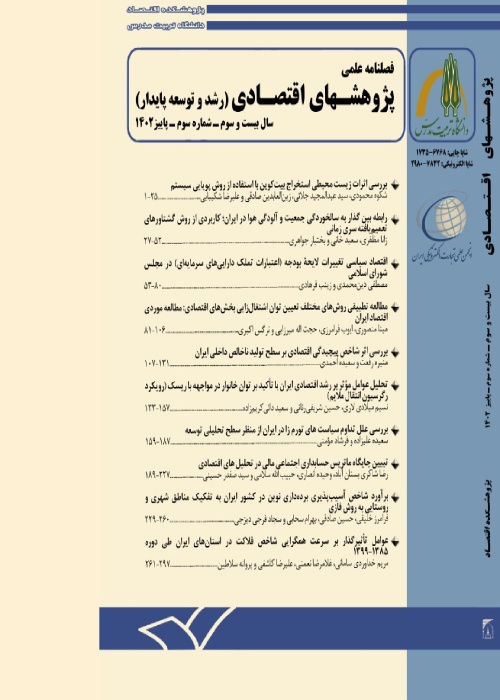Investigating the Three Dimensions of Credit Risk of Banks in Iran with an Emphasis on the Geographical Location of the Enterprise
Aim and Introduction :
Credit risk is the possibility of a loss resulting from a borrower's failure to repay a loan or meet contractual obligations. Traditionally, it refers to the risk that a lender may not receive the owed principal and interest, which results in an interruption of cash flows and increased costs for collection. Although it is impossible to know exactly who will default on obligations, properly assessing and managing credit risk can lessen the severity of a loss. Interest payments from the borrower or issuer of a debt obligation are a lender's or investor's reward for assuming credit risk.When the borrower remains financially healthy and pays the agreed instalments and interest as scheduled, the loan is said to be performing. But there is always the risk that the company or individual will not be able to repay within the agreed timespan. If this happens or looks likely to happen, the bank must classify the loan as “non-performing”. A bank loan is considered non-performing when more than 90 days pass without the borrower paying the agreed instalments or interest. Non-performing loans are also called “bad debt”. To be successful in the long run, banks need to keep the level of bad loans at a minimum so they can still earn a profit from extending new loans to customers. If a bank has too many bad loans on its balance sheet, its profitability will suffer because it will no longer earn enough money from its credit business. In addition, it will need to put money aside as a safety net in case it needs to write off the full amount of the loan at some point in time.
This study with a new approach examines the determinants of credit risk in Iranian banks from 2006 to 2019. Province, banking groups and time are three dimensions used in the modeling of this study as explanatory variables of credit risk. Furthermore, a three-dimensional panel data model is used to measure the coefficients of independent variables. In the case of two-dimensional panels, each observation is typically a vector of values of a dependent variable and one or more independent variables, and comes with two labels attached, one is frequently time and the other an individual person, business or nation. When the panel is multi-dimensional, each observation comes with many labels, for example, time, individual employee, firm, and industry. An observation could consist of values of multiple endogenous variables and multiple exogenous or predetermined variables, labeled with at least time and one other label. All of the problems and issues which arise for two-dimensional panels also exist for multi-dimensional panels.
Findings :
The results of the study indicate that access to provincial credit has a positive effect and the size of the provincial banking sector has a negative impact on the provincial credit risk. In addition, among the variables of the regional economics, the provincial unemployment rate and the provincial real economic growth rate affect positively the provincial credit risk, and the provincial Gini coefficient variable affect negatively the provincial credit risk. The index of road network accessibility as a sensitive variable has a negative influence on the credit risk of the province, which means that in regions where the index of road network accessibility is larger, the cost of access for economic enterprises is reduced, so the profit margin and the ability to repay facilities by the enterprise increases and less default occurs.
The banking system is subject to some risks in attaining its goals; one of the most important of which is encountering non-performing loans and ultimately write-offs. The emergence and accumulation of NPLs can become a systemic problem when this affects a considerable part of the financial system, threatening its stability and/or impairing its core function of facilitating financial intermediation. A significant increase in NPLs throughout the system can have a negative impact on the resilience of the banking sector to shocks, thus increasing systemic risk. NPLs may also be associated with higher funding costs and a lower supply of credit to the real economy. This may result from negative market sentiment towards banks with high levels of NPLs, which decreases banks’ ability to access liquidity and capital markets (potentially leading to credit supply constraints). In order to reduce credit risk, the necessary policies should be adopted to take into account the considerations of the regional economics in payment of facilities.
- حق عضویت دریافتی صرف حمایت از نشریات عضو و نگهداری، تکمیل و توسعه مگیران میشود.
- پرداخت حق اشتراک و دانلود مقالات اجازه بازنشر آن در سایر رسانههای چاپی و دیجیتال را به کاربر نمیدهد.



